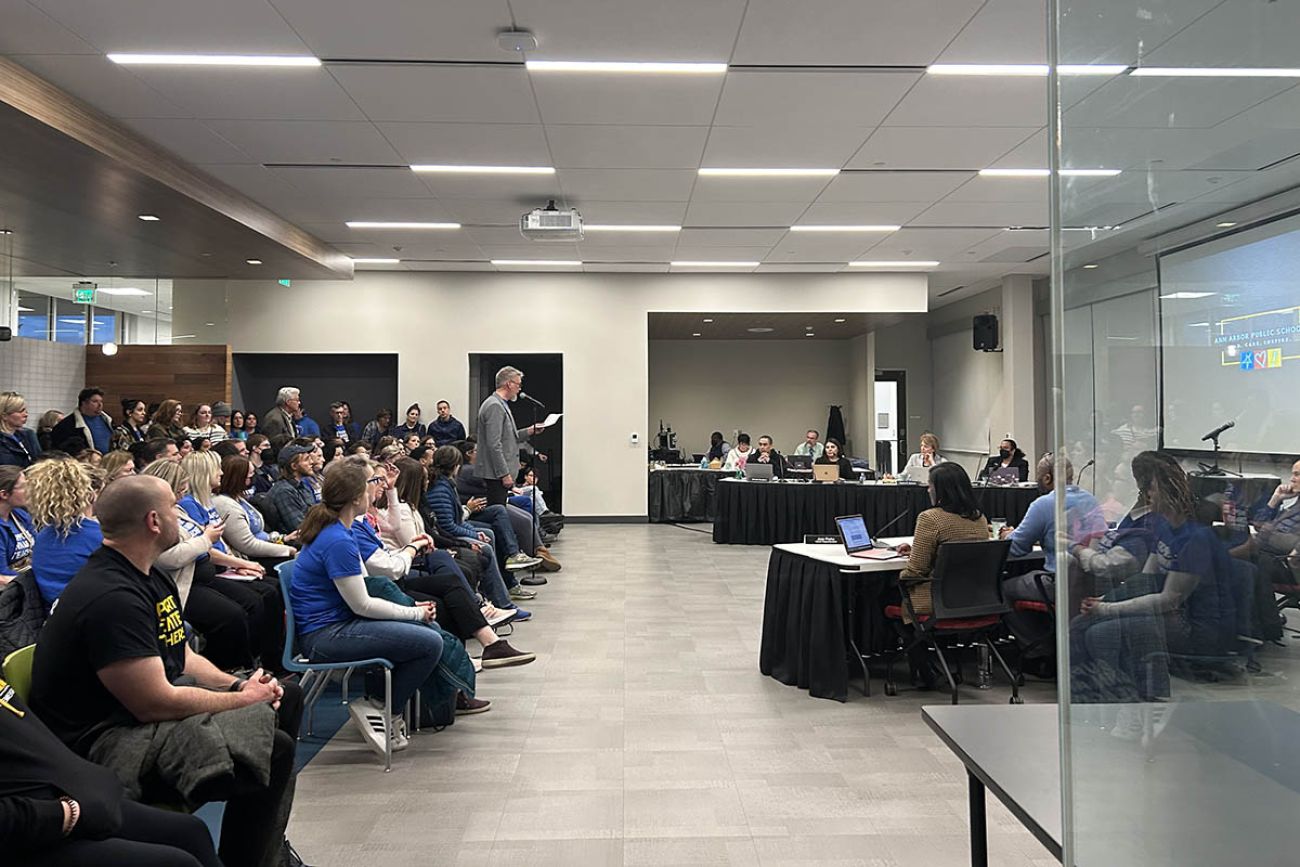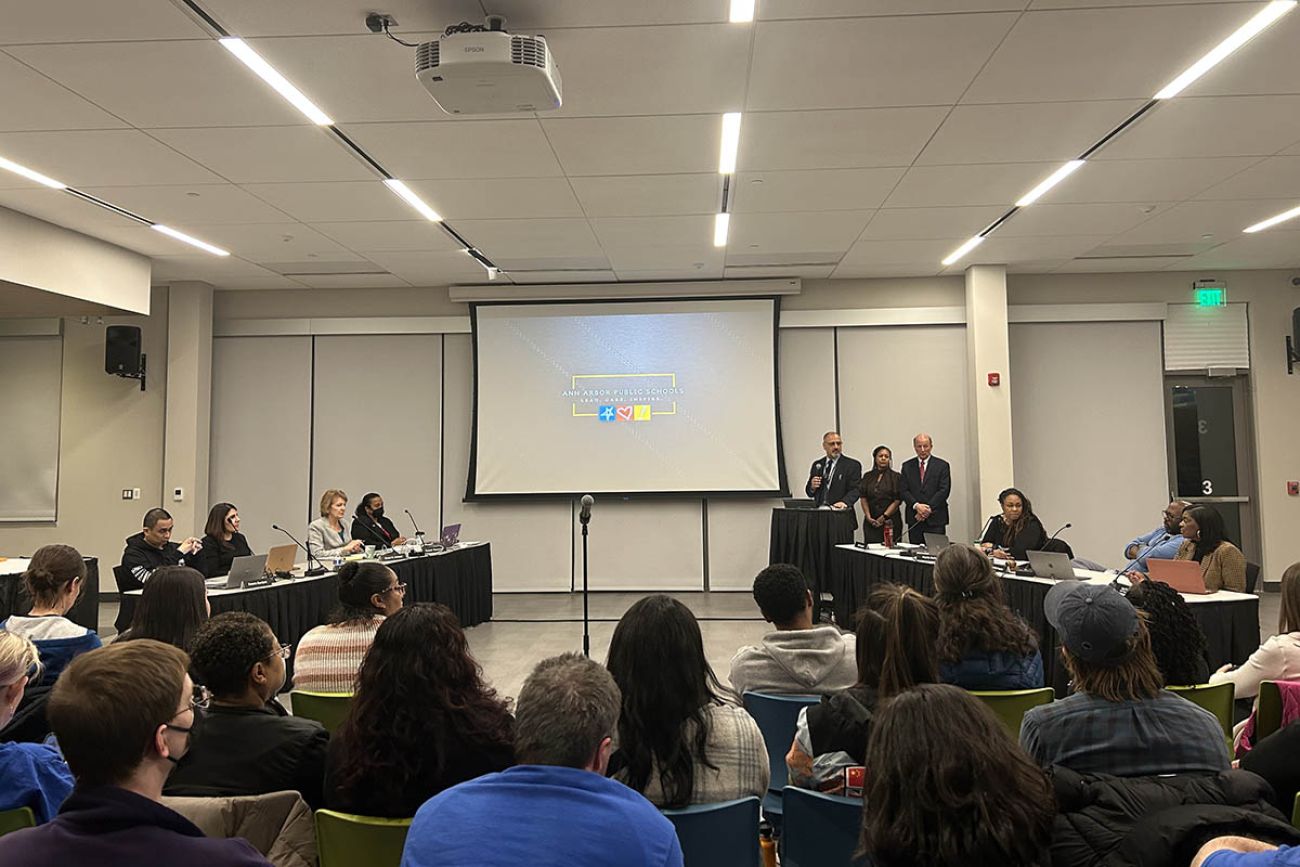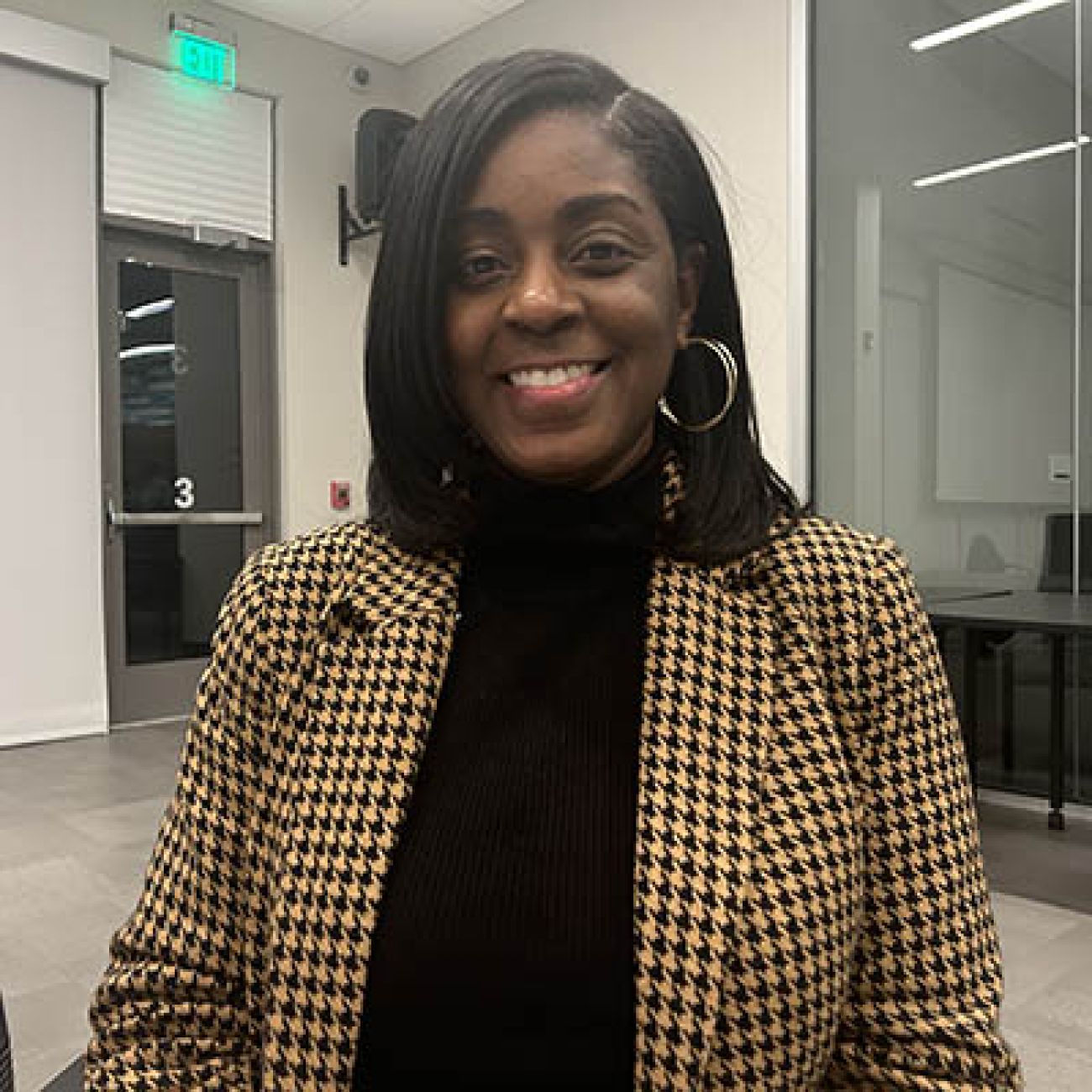As ‘COVID cliff’ looms for Michigan schools, Ann Arbor faces cuts, layoffs


- Ann Arbor Public Schools is expecting to make $25 million in cuts next year and is set to lay off staff
- Experts say schools across the state and country could face financial hardships as pandemic relief funding runs out this fall
- Many Michigan districts built up their savings accounts when flush with COVID cash, but Ann Arbor is among those that did not
ANN ARBOR — Teachers and parents flooded an Ann Arbor school board meeting Wednesday night, demanding to know how officials allowed a shocking $25 million budget shortfall that is expected to force staff layoffs and other cuts.
“This level of administrative mismanagement, abysmal efforts at transparency and a complete absence of checks and balances in this district need to be addressed,” said Daniel Crowley, a local middle school teacher.
District leaders in the affluent community say a confluence of factors led to financial woes for the school system: the district has increased staffing, saw enrollment shrink and raised wages for staffers in recent years.
Related:
- Michigan’s charters, virtual schools buck trend in falling enrollment
- Enrollment dropping, COVID relief over. Will more Michigan schools close?
- Advocates ask Michigan to fund educator retention programs
Ann Arbor’s struggles are unique but come amid a looming threat for districts across the country. A massive influx of pandemic relief funding from the federal government is running out, creating a “perfect storm” for districts who also lost students during COVID-19 and have seen costs increase with inflation.
It’s what many have called the “COVID cliff,” a major funding loss only partially offset by increased state spending in Michigan.
“The vast majority of school districts are going to see their budgets decline from a revenue standpoint, with the loss of these one-time federal dollars,” said Craig Thiel, research director for the Citizens Research Council, a nonpartisan organization based in Lansing.
“Some districts are seeing that sooner than others — Ann Arbor might be an example — and at the same time that that money is going away, the long term-trend has been schools have been losing enrollment.”
Michigan school districts received roughly $6 billion in federal pandemic relief aid designed to help them respond to and recover from the pandemic. The last round of funds must be spent by the end of September.
As that money runs out, “many districts will need to right-size their budgets,” according to a recent national analysis by the nonprofit Brookings Institution.
“This is likely to involve painful cuts – the type that can consume leaders in any district. The cuts will be especially challenging in districts that used relief money to add staff or maintain excess capacity that they would not have been able to afford otherwise.”
In Michigan, the pending loss of COVID funding combined with falling enrollment numbers means “many” districts may “face the prospect of whether to close buildings … to ensure their long-term fiscal stability,” according to a recent Citizens Research Council report.
Ann Arbor received about $27 million in federal pandemic relief funding and has spent nearly all of it, according to the state’s COVID-19 dashboard.
The Michigan Treasury, which intervenes when school districts face financial peril, has already reached out to Ann Arbor about its precarious financial health.
The district must submit a recovery plan to the state by April 15, said Marios Demetriou, a retired assistant superintendent for finance and operations and current consultant for the district.

Demetriou, who was only recently hired, told Bridge Michigan he cannot say with certainty whether the end of COVID-19 funds played a role in the current budget crunch. But the district could have acted sooner to avert a crisis, he acknowledged.
“Because we have loss of enrollment, usually, you staff down because you don't need as many people,” Demetriou said, citing an enrollment decline of more than 900 students in the first year of the pandemic.
“But I understand, also, from a human perspective, that when you're going through COVID, you don't want to let people go.”
Saving for a rainy day
State data shows many Michigan districts were able to use pandemic relief funds to offset other costs and ultimately grow their savings. That wasn’t the case in Ann Arbor, whose annual fund balance dropped from 7% prior to COVID to 4% in 2023. It’s projected to drop below 2% by this summer.
Most government finance experts recommend a 15% fund balance, which is a leading indicator of financial health and gives schools a “rainy day fund” they can tap into in emergency situations to avoid major cuts.
“To me, fund balance is like oxygen, if you don’t have oxygen, you can’t survive,” Demetriou, the consultant for the Ann Arbor district, told board members last week. “If you don’t have a fund balance, you can’t survive.”
Statewide, district fund balances have nearly doubled from 2019 to 2023, according to an analysis by Thiel, at the Citizens Research Council.
That makes Ann Arbor something of an outlier – but it’s not alone.
More than 20 Michigan school districts that began the pandemic with fund balances of less than 15% saw their savings shrink even over the course of the COVID-19 crises, according to Thiel’s analysis.
In the Upper Peninsula, Tahquamenon Area Schools fund balance has dropped from 11% pre-pandemic to 4% in 2023.
“Prior to COVID, we were on a very good trajectory…(but) there's some work that we need to do,” Superintendent Stacy Price told Bridge. “Our declining enrollment still, you know, bites us a little bit. It's just, we live in an area where the draw for employment for parents is not there.”
Tahquamenon faced significant costs over the last few years, including making repairs on a 92-year-old building and repairs on an aging bus fleet, Price said. The district ultimately used its pandemic funds to purchase new buses but there were delays in those getting to the distinct, she said.
Tahquamenon is one of 16 districts the state treasury department had flagged for financial distress as of March 1. And it’s one of four districts added to the state’s “early warning” list so far this year.
Price said the district will be meeting with the department monthly and she anticipates spending cuts will be necessary.
“I'm not happy with it,” she said of the district’s balance sheet. “It's not in a great spot…We need to look at that and make it a sustainable and constant amount moving forward.”
Districts used pandemic relief funds for many things, including tutoring, staff bonuses and mental health initiatives. But growing rain day savings allows districts to avoid cuts otherwise forced by declining enrollment, Thiel said.
At the same time, districts who saved aggressively during the influx of COVID funding have faced criticism for not directing more dollars towards student recovery and other pandemic response services.
Michigan student test scores improved in some areas last year but remained below pre-pandemic levels in Math and English.
“I’ve heard a lot more concerns about districts having larger than average, inflated fund balances than the opposite problem,” said state Rep. Regina Weiss, an Oak Park Democrat and former teacher who chairs the House K-12 budget subcommittee.
Enrollment crash
Experts warned districts against using COVID-relief funds for recurring costs, such as staffing.
But in Ann Arbor, the district has added 52 full-time employees since 2019 while losing about 1,100 students, according to a Demetriou presentation last week. Most of those students left in 2021 and 2022, amid mounting parent frustration that the district had delayed a return to in-person instruction.
Statewide, Michigan public schools lost nearly 62,000 students in the fall of 2020 as parents reacted to decisions to keep classes online or in-person. Although 6,000 students returned in 2021, enrollment figures dropped again in 2022 and 2023, a recent Bridge analysis found.
Last June, Detroit Public Schools Community District board members cited enrollment declines and the end of pandemic funds in approving a 2024 budget with roughly $300 million in cuts. Superintendent Nikolai Vitti defended the move, saying he had ensured one-time funds were spent on one-time initiatives.
Last fall, Wayne-Westland Community Schools announced 39 part-time and full-time layoffs effective this semester and the district had explored whether to privatize transportation services as a way to cut costs.
Ann Arbor leaders have not announced a full plan to cut $25 million in spending, including $14 million necessitated by what they’ve called an accounting error.
But Interim Superintendent Jazz Parks, who the board wants to permanently hire, last week outlined several immediate steps: The district is on a hiring freeze, working to renegotiate contracts with vendors and reducing central office and administrative staff positions.

The school board on Wednesday approved a resolution to authorize the superintendent to issue layoff notices to some staff.
Roughly 40 people — many wearing blue shirts that say “Support Ann Arbor teachers” – spoke out during a public comment period.
Zahra Seyam, a teacher in the district, bemoaned the pending layoffs and told board members that blaming district employees is a “slap in the face.”
“I’ve heard (parents) time and time again say, ‘special education needs to be heard, students need after-school care and classes should be appropriately sized,’” she said. “This is not going to be helping your enrollment. This is going to be feeding into the cyclical cycle.”
See what new members are saying about why they donated to Bridge Michigan:
- “In order for this information to be accurate and unbiased it must be underwritten by its readers, not by special interests.” - Larry S.
- “Not many other media sources report on the topics Bridge does.” - Susan B.
- “Your journalism is outstanding and rare these days.” - Mark S.
If you want to ensure the future of nonpartisan, nonprofit Michigan journalism, please become a member today. You, too, will be asked why you donated and maybe we'll feature your quote next time!


